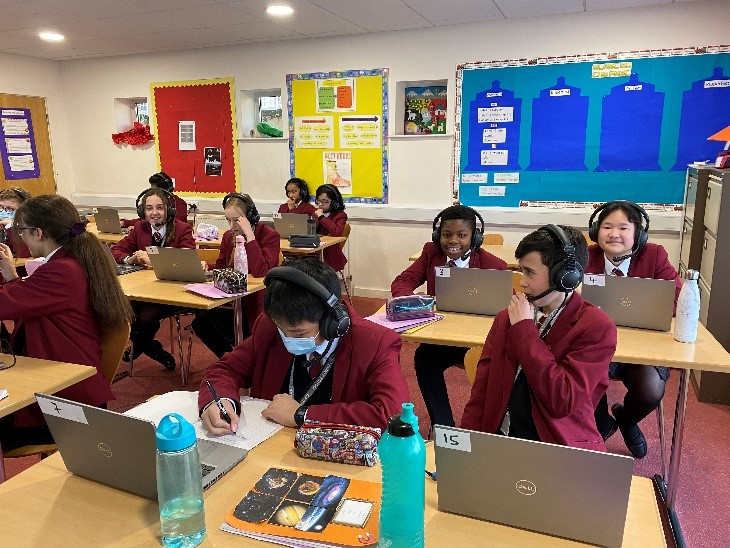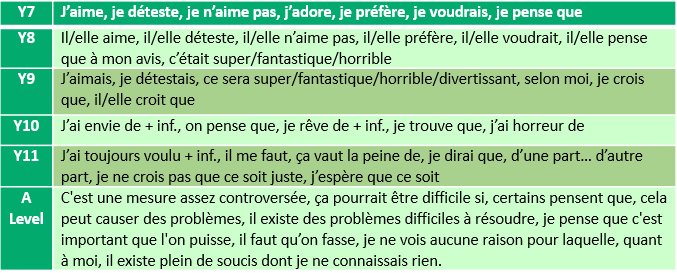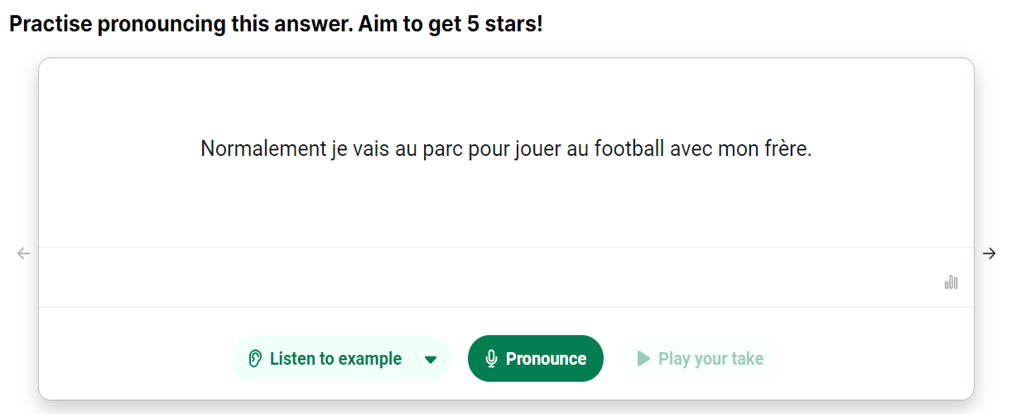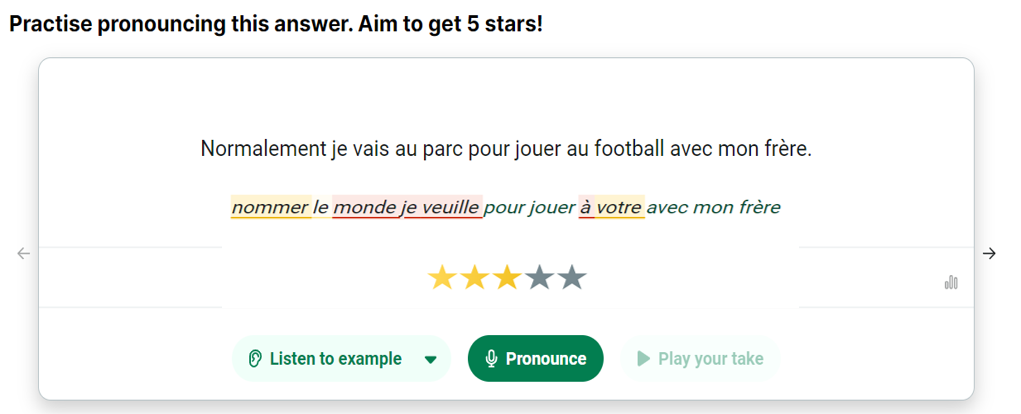Sanako Connect activities to help students prepare for GCSE and A Level general conversation speaking exams

An important part of GCSE and A Level speaking exams, no matter what the specification, whether it is the old or new GCSE, are general conversation questions.
Students need to be prepared carefully for success in these over the years, so that they can develop a core repertoire of, for example, opinion phrases, connectives and so on, which develop in complexity over time, and which they can use and apply to lots of different contexts.
An example of how opinion phrases in French can become increasingly complex over time is here:
The brilliant Rosenshine’s Principles of Instruction are highly regarded by educators globally, and can apply to any subject.
When developing activities for the Sanako Connect online platform to help students I have been using the Rosenshine principles as a guide to support students’ learning and to help make the language ‘stick’.

I have recently been developing some activities to help students prepare for the French and Spanish GCSE Foundation and Higher and A Level general conversation questions in A Level exams. Firstly, I have been providing models of ‘what a good one looks like’ at grade 4, grade 5, grade 8/9 and so on. It’s vital that student know what they’re aiming for.
Here’s an example:

Another principle is ‘present new material in small steps with student practice after each step’. With the example, students have to interact with it, listen carefully and complete a dictation-style gap fill activity, all useful in developing listening skills and testing and cementing their knowledge of grammar.

We then allow students lots of opportunities to practise, another Rosenshine principle, which can take place both in class and at home with the Connect software, like this activity where students are demonstrating understanding by translating key phrases into the target language from the model:

As well as practising translating, students can also practise their correct pronunciation of the example, which is another skill to make the sound-spelling link, guided by a model example where they can hear the correct pronunciation first.

This innovative software allows them to get feedback on their pronunciation in the form of a zero to five star rating, and words mispronounced underlined, so they can try again. Here’s an example with some room for improvement:
 Eventually, after lots of practice (and hopefully, obtaining a high success rate, Rosenshine principle 7), and the opportunity to hear models at different levels or grades, students then have the chance to record their own version and submit it. The teacher will be able to see the marked (automatically) gap fill and translation activities and also how many times the student has practised pronouncing each utterance, and listen to the final version.
Eventually, after lots of practice (and hopefully, obtaining a high success rate, Rosenshine principle 7), and the opportunity to hear models at different levels or grades, students then have the chance to record their own version and submit it. The teacher will be able to see the marked (automatically) gap fill and translation activities and also how many times the student has practised pronouncing each utterance, and listen to the final version.
The teacher can then provide bespoke feedback, thus checking for understanding, another Rosenshine principle. Scaffolds are provided here for the difficult task of speaking, in the form of key phrases that students can include. It’s great for teachers and students to be able to use technology that really will save teachers time and enhance students’ learning experience through evidence-informed pedagogy.
For more information about the Sanako Connect platform and a catalogue of all our resources, please contact us




